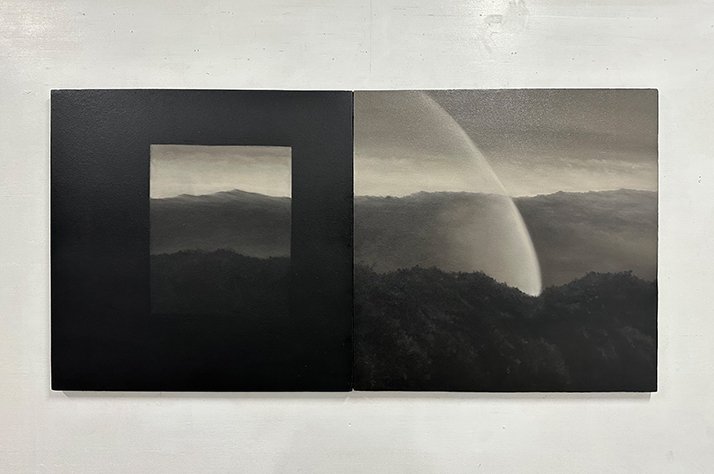De/familiarization: Exhibitions in October 2023
Art+ Magazine rounds up prominent shows for the month of October.
Written by Amanda Juico Dela Cruz
October 27, 2023
Structures, objects, memories, spaces, scenes, and iconographies that are so familiar for their own merit are reimagined and recontextualized in works of contemporary art to convey a deeper intention, to meditate on physical and metaphysical realities, and to question the status quo.
Ianna Engaño’s Bahay-bahayan, Eskinita Art Farm.
Lining the shelf on the wall of the gallery are familiar structures seen in communities plagued by poverty. Barong-barong is the central image in the sculptural works made of clay. Distinct characteristics of such type of housing are patched roofs, plywood walls, makeshift curtains, and used tires and other found objects. Barong-barong is the manifestation of Filipino resilience. The initially built first floor is smaller than the second as additional floors are a symbol of one’s bettering economic status. All of these elements are rendered on the clay sculptures with the artist’s body—hands—touching the medium with personal history.
Antipas Delotavo, Objet D’ Art, BenCab Museum.
Individual portraits of working-class men and women are framed with pieces of objet d’art—from metalworks to glassworks, from statuettes to pieces of furniture—that if one would look close enough, one might be able to see the violent roots from where these pieces came from. With French terms as the title of each work, they somehow evoke a sense of mockery, if not of parody, of the parvenu, the nouveau rich. Instead of portraits, the artist calls these as bodegons, the Spanish for still life which roots from bodega or store room, adding another layer to the works.
Yasmin Sison, Time is a Restless Sea, Silverlens.
With the sea, sky, and sand encompassing the world in the paintings and with the human figures posed as if in the middle of an action with the suggestion of an approaching storm, the paintings are a recording of the artist’s passing memories, of fleeting moments, of instances of impermanence. In some paintings, the human figures are dressed in a costume or in a different identity, conveying the artist’s preoccupation in the mystery of these figures’ parallel lives. Found objects such as driftwood, sea glass, and broken tiles and pottery are given new life, one different from their lives before.
Christian Carillaza, II, Kuta Art Space.
The paintings show a monochromatic life, literally and figuratively, as the artist takes the point-of-view of one in a space of confinement. It could be a person deprived of liberty from their prison cell longing for freedom or a child stuck in their home while wondering what the world is like. These canvases are a peak to the world that only a window could show, expanding from the very physical thing of the canvas to the metaphysical space of imagination and sensation evoked by the artist’s mastery in his work. Yearning. Dreaming. Guests are invited to live through these too.
Alvin Zafra, The Passerby, Artinformal.
With only the lampposts and the moon keeping the artist accompanied in his solitary bike rides just when the neighbors have fallen asleep, the artist lurks in the darkness of urban spaces to take in what these meager light sources reveal. The images have to be taken in an instant, making no room for any more conversations with strangers whose silhouettes give life to the already dreamy scenes of monuments and structures. It’s the dead of the night. Rendered in etchings on the surface of sandpaper, these works are closest to the concept of photography which image depends on light.
Eugenia Alcaide, Patrick de Veyra, Alab Pagarigan, Vincent Diñoso, Sarah de Veyra-Buyco, Madonna Mortera, Rafael Legarda, Hamill Buyco, Daniel Natividad,and Roberto Villalpando Sepúlveda, Masters: Visions Through Time, White Walls Gallery.
Visual artists, ideas, and iconographies from the Renaissance to the twentieth-century are referenced, reframed, and recontextualized by contemporary artists from Manila, Sydney, and Valle de Bravo. With no limitations and prescriptions on the artists’ process of appropriation, the works of contemporary art are a response to the prompt that urged them to create homages to the masters that left a legacy in one way or another in art history. By using the artists’ personal narratives as their own compass in their creations, their voices are amplified by the very ideas, iconographies, and artists they have chosen to pay homage to.







